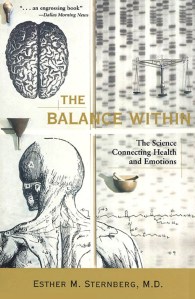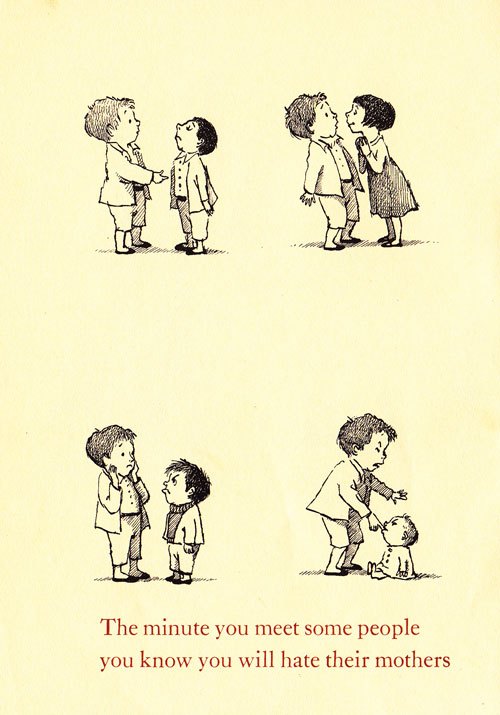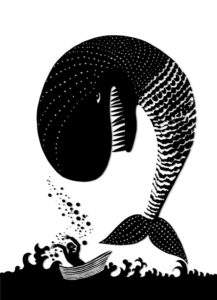Stress and the Social Self: How Relationships Affect Our Immune System
INSPIRATIONAL, 15 Apr 2019
Maria Popova | Brain Pickings – TRANSCEND Media Service
“We are all tethered to our social worlds by invisible but steel strong wires.”
 Relationships, Adrienne Rich argued in her magnificent meditation on love, refine our truths. But they also, it turns out, refine our immune systems. That’s what pioneering immunologist Esther Sternberg examines in The Balance Within: The Science Connecting Health and Emotions (public library) — a revelatory inquiry into how emotional stress affects our susceptibility to burnout and disease.
Relationships, Adrienne Rich argued in her magnificent meditation on love, refine our truths. But they also, it turns out, refine our immune systems. That’s what pioneering immunologist Esther Sternberg examines in The Balance Within: The Science Connecting Health and Emotions (public library) — a revelatory inquiry into how emotional stress affects our susceptibility to burnout and disease.
As just about every socialized human being can attest, interpersonal relationships play a significant role in our experience of stress — either contributing to it and or alleviating it. And the way we connect — something psychologist Barbara Fredrickson has termed “positivity resonance” — is deeply patterned through our earliest experiences of bonding, which train our limbic pathways. Sternberg traces the cognitive origin of these formative patterns:
Somewhere in our brains we carry a map of our relationships. It is our mother’s lap, our best friend’s holding hand, our lover’s embrace — all these we carry within ourselves when we are alone. Just knowing that these are there to hold us if we fall gives us a sense of peace. “Cradled,” “rooted,” “connected” are words we use to describe the feeling that comes of this knowledge; social psychologists call this sense embeddedness. The opposite is perhaps a more familiar term — we call it loneliness.
Thus a person, sitting by herself in a room, may appear to others to be quite alone; but that person, if embedded, will have a world of relationships mapped inside her mind — a map that will lead to those who can be called on for nurture and support in time of need. But others, the Gatsbys among us, might be among a crowd of dozens and yet feel very much alone. Many pieces of great literature have in fact tapped into this sense of disconnectedness. Our sense that powerful forces beyond our bodies link us to others is so ingrained that we use phrases such as “times that bind,” “family dyes,” and “bonding,” to describe those intangible connections. And the emotions they evoke are among the greatest forces that affect our hormonal, our nerve chemical, and our immune responses — and through these, our health and our resistance to disease.
We encode these emotions early and carry them forward through symbol and ritual, using physical experiences and objects as memory-anchors. Sternberg captures the enduring echoes of these primal patterns:
A very young child will carry a physical reminder of mother’s embrace: a security blanket, a favorite toy, something soaked with all the smells of home and love… The engagement ring and wedding band have the power in an ounce of gold to evoke the memory of the beloved… We are all tethered to our social worlds by invisible but steel strong wires.
And yet, however deeply engrained these patterns may be, relationships are also inherently alive — they grow, change, and invariably become what Leo “Dr. Love” Buscaglia memorably termed a process of “dynamic interaction.” In a passage that calls to mind David Whyte’s wisdom on endings and beginnings, Sternberg examines the often inevitable evolution — and sometimes revolution — of relationships:
A relationship is built of strings of moments that our mind has pulled out from where they were stored in memory, moments and memories that come with emotions attached. Memories, spliced together like this in a seamless thread, make a relationship seem continuous and whole. So, after not seeing a childhood friend for years, we can pick up where we left off, as if no time at all had intervened. In this way, too, relationships can be sustained in thought during long absences — parents away from adult children, long-distance lovers, commuting husbands and wives. But the same capacity of the brain to forge this chain of memory can lead to difficulties in a relationship if one member evolves past where the other’s memory left off. So, a child leaving home for college, who left still on the verge of adulthood and returns an independent adult, will encounter a parent’s resistance when the person who steps back into the parent’s memory is not the same as the one who left. It takes a period of adjustment on both sides to set the chain evolving back on a new course.
[…]
At times, one small corner of that map can swell and grow, reverberate and suddenly seem to take over our entire world: we fall in love; we are abandoned; we become envious; we hate. The persons who are the object of such feelings can take on gigantic proportions in our minds and dominate our whole social and emotional outlook, coloring every corner of our lives, until, through monumental effort, or simply through gradual erosion of time, they recede again to their rightful place and size.
These fluid social dynamics, Sternberg points out, permeate our culture well beyond our immediate individual experience:
The social world can activate the stress response, or it can tone it down. The effects of these personal connections can be more soothing than an hour of meditation. They can also be as stressful, and more long-lived, as running at top speed for twenty minutes on a treadmill. In fact, of all the sensory signals that impinge on us from moment to moment throughout the day, it is the ones connected in some way to another person that can trigger our emotions most intensely. If emotions are really meant to move us, it is these bonds toward which they push or from which they pull. Whole industries are based on the power of such social bonds: romance novels, movies, cosmetics, fashion, advertising, popular songs. In one way or another, the whole of our popular culture strives toward sealing or healing these social connections.
And heal we must, for the social self is central to our neurobiological experience of stress:
It seems that social conflict brings out an additional and unique hormonal response that is not stimulated by other forms of stress. This unique pattern of hormonal stress response predisposes socially stressed mice to herpes infection. The hormone that does this, which is secreted in saliva, is called nerve growth factor. Those who are prone to herpes virus “cold sores” will find this situation all too familiar. It is exactly when we are stressed — perhaps with lack of sleep and too much work, but especially with prolonged anxiety over personal or workplace situations — that we invariably get a cold sore.
In the remainder of the wholly illuminating The Balance Within, Sternberg goes on to explore the neurobiological underpinnings of this emotional machinery, the role of our psychological patterning in our physiological predisposition to disease, and how we can begin to rewire our response to stress. Complement it with Naomi Wolf on the psychology of stress, orgasm, and creativity and Adam Phillips on why frustration is essential for satisfaction in love.
_______________________________________
 Brain Pickings is the brain child of Maria Popova, an interestingness hunter-gatherer and curious mind at large obsessed with combinatorial creativity who also writes for Wired UK and The Atlantic, among others, and is an MIT Futures of Entertainment Fellow. She has gotten occasional help from a handful of guest contributors. Email: brainpicker@brainpickings.org
Brain Pickings is the brain child of Maria Popova, an interestingness hunter-gatherer and curious mind at large obsessed with combinatorial creativity who also writes for Wired UK and The Atlantic, among others, and is an MIT Futures of Entertainment Fellow. She has gotten occasional help from a handful of guest contributors. Email: brainpicker@brainpickings.org
Go to Original – brainpickings.org
Tags: Mental Health
DISCLAIMER: The statements, views and opinions expressed in pieces republished here are solely those of the authors and do not necessarily represent those of TMS. In accordance with title 17 U.S.C. section 107, this material is distributed without profit to those who have expressed a prior interest in receiving the included information for research and educational purposes. TMS has no affiliation whatsoever with the originator of this article nor is TMS endorsed or sponsored by the originator. “GO TO ORIGINAL” links are provided as a convenience to our readers and allow for verification of authenticity. However, as originating pages are often updated by their originating host sites, the versions posted may not match the versions our readers view when clicking the “GO TO ORIGINAL” links. This site contains copyrighted material the use of which has not always been specifically authorized by the copyright owner. We are making such material available in our efforts to advance understanding of environmental, political, human rights, economic, democracy, scientific, and social justice issues, etc. We believe this constitutes a ‘fair use’ of any such copyrighted material as provided for in section 107 of the US Copyright Law. In accordance with Title 17 U.S.C. Section 107, the material on this site is distributed without profit to those who have expressed a prior interest in receiving the included information for research and educational purposes. For more information go to: http://www.law.cornell.edu/uscode/17/107.shtml. If you wish to use copyrighted material from this site for purposes of your own that go beyond ‘fair use’, you must obtain permission from the copyright owner.

